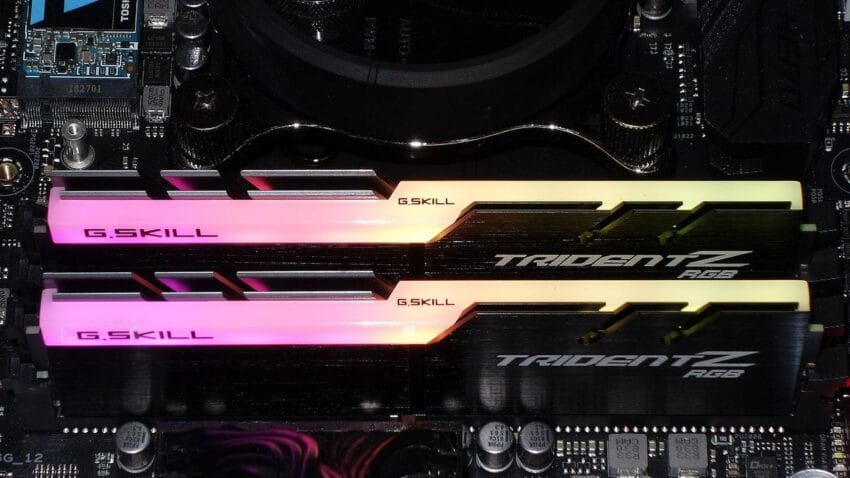
ddr4 costs soar as manufacturers pull the — Recent reports indicate that DDR4 memory prices are experiencing significant fluctuations due to supply chain dynamics and market behavior..
Recent reports indicate that DDR4 memory prices are experiencing significant fluctuations due to supply chain dynamics and market behavior.
ddr4 costs soar as manufacturers pull the
Current State of DDR4 Pricing
ddr4 costs soar as manufacturers pull the: key context and updates inside.
According to recent findings by Digitimes, DDR4 spot prices have stabilized after a frenzied second quarter, yet contract pricing continues to rise as supply remains tight. The memory market has been characterized by volatility, with manufacturers adjusting their production strategies in response to changing demand and supply conditions. This has led to a complex landscape for consumers and businesses alike, who are now facing increased costs for DDR4 memory modules.
Spot vs. Contract Pricing
Spot pricing refers to the cost of memory modules that can be purchased immediately, while contract pricing is typically agreed upon for future delivery. The distinction between these two pricing models is crucial for understanding the current market dynamics. Spot prices for DDR4 have seen a degree of stabilization, which may suggest that immediate demand is being met to some extent. However, the rise in contract pricing indicates that manufacturers are anticipating continued tightness in supply, prompting them to adjust their pricing strategies accordingly.
Factors Contributing to Price Increases
Several factors have contributed to the rising costs of DDR4 memory, including:
- Manufacturing Adjustments: Many manufacturers have scaled back production in response to previous overproduction and declining demand. This reduction in output has led to a tighter supply, which naturally drives prices upward.
- Panic Buying and Stockpiling: As news of potential shortages circulates, consumers and businesses have begun to panic buy and stockpile DDR4 memory. This behavior exacerbates the supply-demand imbalance, further inflating prices.
- Global Supply Chain Issues: Ongoing global supply chain disruptions, including semiconductor shortages and logistical challenges, have impacted the availability of DDR4 memory. These issues have made it increasingly difficult for manufacturers to meet demand.
- Technological Advancements: As technology continues to evolve, newer memory standards such as DDR5 are gaining traction. This shift can lead to reduced production of older standards like DDR4, affecting their availability and pricing.
Market Reactions and Stakeholder Implications
The rising costs of DDR4 memory have elicited varied reactions from stakeholders across the technology sector. Manufacturers, retailers, and consumers are all feeling the impact of these price fluctuations.
Manufacturer Strategies
Manufacturers are faced with the challenge of balancing production levels while responding to market demand. Some companies are opting to focus on producing newer memory technologies, which may lead to further reductions in DDR4 output. This strategic shift can have long-term implications for the memory market, as consumers may find themselves increasingly reliant on newer standards.
Retailer Responses
Retailers are also adapting to the changing landscape. Many are adjusting their pricing strategies to reflect the rising costs of DDR4 memory. Some retailers may choose to limit stock to prevent losses from overstocking, while others may increase prices to maintain profit margins. This can create a challenging environment for consumers, who may find it difficult to secure affordable DDR4 memory.
Consumer Behavior
For consumers, the rising costs of DDR4 memory can have immediate and long-term implications. Many individuals and businesses rely on DDR4 for their computing needs, and increased prices can strain budgets. Panic buying and stockpiling behavior can lead to further price increases, creating a cycle that is difficult to break. Consumers may need to consider alternative memory solutions or delay upgrades until prices stabilize.
Implications for Future Memory Standards
The current state of the DDR4 market raises questions about the future of memory standards. As DDR5 technology becomes more widely adopted, the demand for DDR4 may decline. However, the transition to newer standards is not instantaneous, and many systems still rely on DDR4 memory. This creates a unique situation where both DDR4 and DDR5 coexist in the market, each influencing the other’s pricing and availability.
Transition to DDR5
DDR5 memory offers several advantages over its predecessor, including higher speeds and improved efficiency. As more devices and systems are designed to support DDR5, the demand for DDR4 may decrease. However, the transition period could lead to continued fluctuations in DDR4 pricing as manufacturers balance production levels between the two standards.
Long-Term Market Predictions
Experts predict that the DDR4 market may continue to experience volatility in the short term. Supply chain issues and manufacturing adjustments will likely play a significant role in shaping pricing trends. In the long term, as DDR5 becomes the standard, DDR4 prices may stabilize, but this will depend on how quickly consumers and manufacturers adapt to the new technology.
Conclusion
The current landscape of DDR4 memory pricing is a reflection of broader market dynamics, including supply chain challenges, manufacturing strategies, and consumer behavior. As prices continue to fluctuate, stakeholders must navigate a complex environment that is influenced by both immediate and long-term factors. Understanding these dynamics will be crucial for consumers and businesses looking to make informed decisions in the evolving memory market.
Source: Original report
Related: More technology coverage
Further reading: related insights.
Further reading: related insights.
Further reading: related insights.
Was this helpful?
Last Modified: September 1, 2025 at 6:47 pm
1 views















